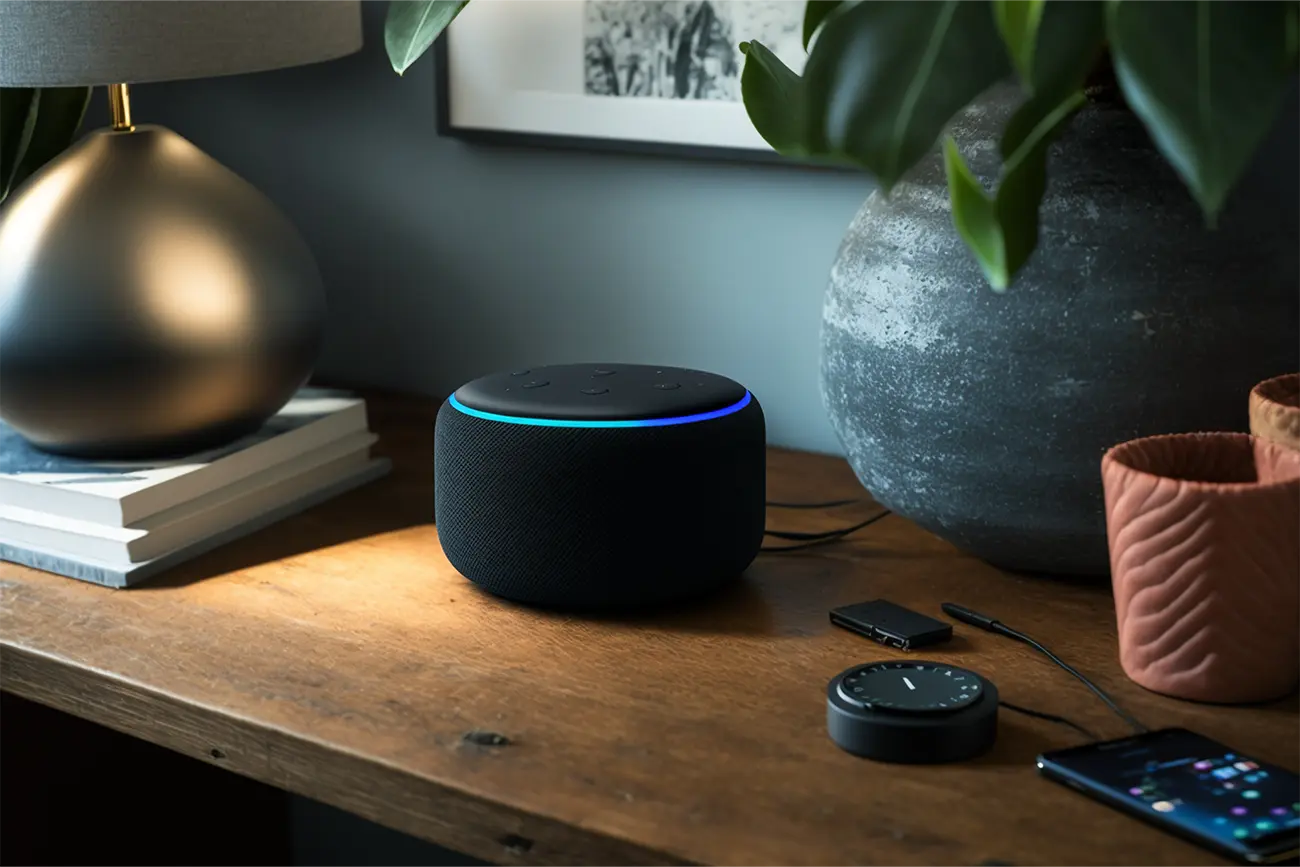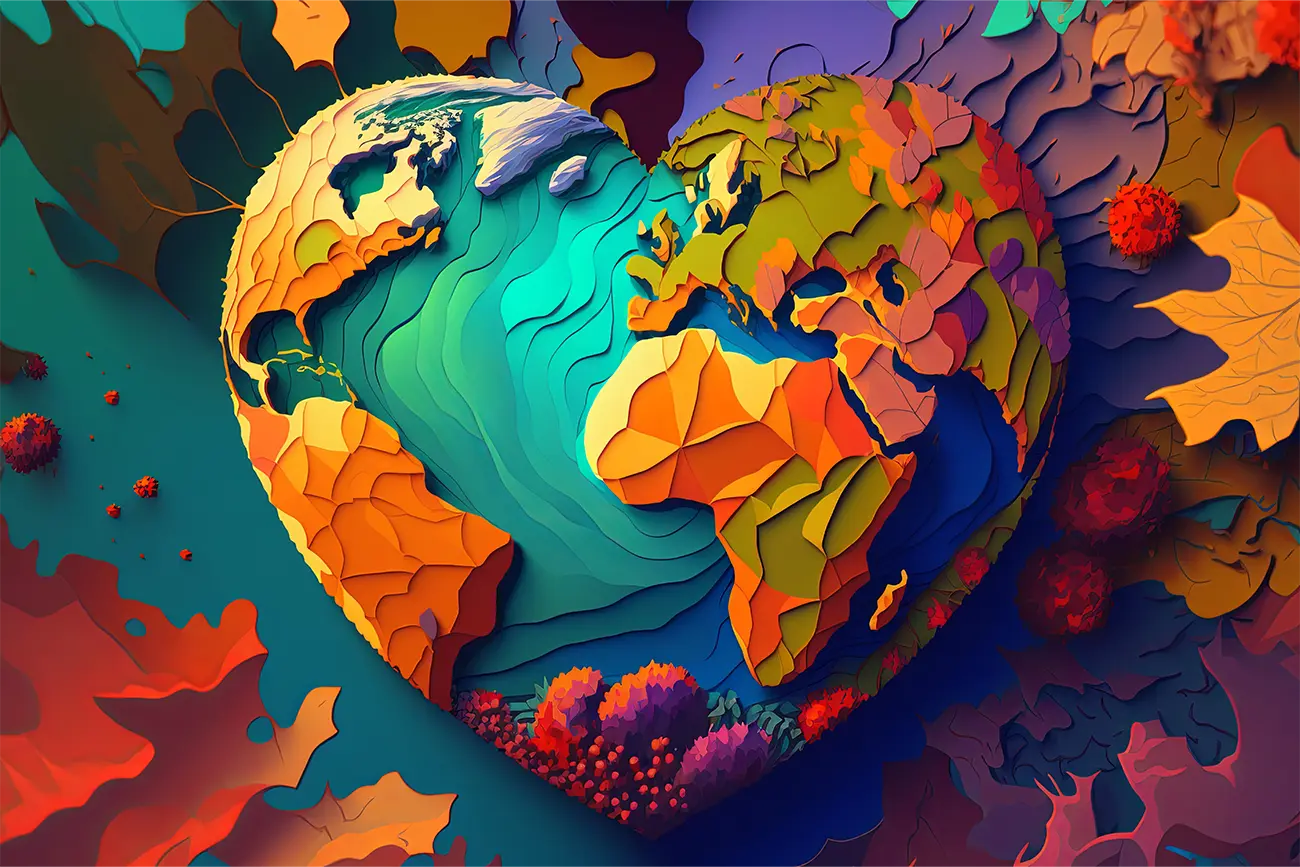In the bustling world of technology, change is the only constant. And when it comes to artificial intelligence, this change often feels like a thrilling roller coaster ride!
Just when we thought text-based chatbots were the pinnacle of AI communication, along comes ChatGPT, taking a bold vocal stride into the future.
No longer confined to the silent realm of text, ChatGPT is now ready to chat, converse, and maybe even sing a tune or two!
But what does this mean for the familiar voices of Alexa and Google Assistant that echo in our homes?
As we delve into the sonic revolution of AI, let's tune into the harmonies and discords that this new feature brings to the vast soundscape of AI.
ChatGPT's Voice Chat Feature
Imagine a world where your favorite chatbot doesn't just reply with text but responds with a voice as warm and engaging as a friend's. That's the world OpenAI is ushering us into with ChatGPT's voice chat feature.
Gone are the days when AI interactions were limited to typed-out questions and text-based replies. The future is vocal, and it's here!
At the heart of this feature is a seamless dance between converting your spoken words into text and then transforming ChatGPT's text response back into speech.
It's like having a conversation with a friend who's incredibly knowledgeable about, well, almost everything!
Want to know the history of the Eiffel Tower? Or perhaps you're curious about the intricacies of quantum physics? Just ask, and ChatGPT is ready to answer, not just with text but with a voice that feels almost human.
But it's not just about the novelty of hearing a chatbot speak. It's about accessibility and breaking down barriers.
For those who might struggle with typing or reading, a voice chat feature opens up a world of information and interaction that was previously harder to access. It's about making AI not just smarter, but also more inclusive.
However, as with all things tech, the voice chat feature isn't just a product of magic (though it sometimes feels like it!). Behind the scenes, sophisticated models and technologies work in tandem to make this vocal dream a reality. And that's where the Whisper Model and the magic of Text-to-Speech come into play.
Diving Deep: The Whisper Model
In the vast symphony of AI technologies, the Whisper Model strikes a note that's both powerful and subtle.
Think of it as the attentive listener in the room, always eager to understand every word you say.
Developed by OpenAI, Whisper is the genius behind ChatGPT's ability to accurately convert your spoken words into text.
But what makes it truly special?
For starters, Whisper isn't just any ordinary speech-to-text model. It's been trained on a staggering 680,000 hours of multilingual and multitask supervised data collected from the web1.
That's like listening non-stop for 77 years!
This extensive training allows it to understand a diverse range of accents, dialects, and languages, ensuring that more people around the world can interact with ChatGPT without a hitch.
But the magic of Whisper doesn't stop at understanding different languages or accents. It's also adept at filtering out background noises, making sense of mumbled words, and even catching those tricky technical terms or brand names that often trip up other voice recognition systems.
In essence, the Whisper Model is the attentive ear in the ChatGPT experience, ensuring that every question, comment, or casual chat you throw its way is understood with precision.
And once Whisper has done its part, the stage is set for the next marvel: bringing ChatGPT's responses to life with Text-to-Speech.
The Magic of Text-to-Speech
In the realm of AI, if Whisper is the attentive listener, then Text-to-Speech is the charismatic storyteller.
It's one thing to craft a well-informed, coherent response, but it's an entirely different challenge to convey that message with the warmth, nuance, and intonation of human speech. That's where ChatGPT's Text-to-Speech magic comes into play.
Harnessing the power of advanced algorithms and the artistry of voice actors, ChatGPT's Text-to-Speech model breathes life into its responses.
It's not just about relaying information; it's about creating a connection. Whether it's the comforting cadence of a bedtime story or the enthusiastic tone of a fun fact, the voice behind ChatGPT aims to resonate with its users on a personal level.
But why is this so groundbreaking?
For starters, the ability to produce human-like speech opens doors to a myriad of applications. From audiobooks narrated by AI to virtual tour guides in museums, the possibilities are boundless.
Moreover, it bridges the gap between technology and humanity, making AI interactions feel less robotic and more relatable.
Collaborations have also played a pivotal role in refining this technology. By working closely with voice actors, OpenAI ensures that the generated speech captures the richness and diversity of human voices.
This means that users can choose from a range of voice options, tailoring their ChatGPT experience to their preferences.
In essence, Text-to-Speech is more than just a feature; it's a testament to the strides AI has made in understanding and replicating the complexities of human communication.
And as we look ahead, it's exciting to imagine how this technology will continue to evolve and shape our interactions with AI.
ChatGPT vs. Alexa vs. Google Assistant
In the bustling marketplace of voice assistants, two names have long dominated the scene: Alexa and Google Assistant.
These tech giants, with their vast ecosystems and years of refinement, have become synonymous with voice-activated help. But with ChatGPT's new vocal prowess, the winds of competition are stirring.
How does ChatGPT's voice chat feature stack up against these industry titans?
Alexa
Amazon's brainchild, Alexa, has been a household name for years.
Integrated into the Echo range of smart speakers, Alexa's strengths lie in its seamless home automation capabilities and vast library of "skills" developed by third-party creators.
Whether it's playing your favorite song, updating you on the weather, or controlling your smart lights, Alexa has been the go-to for many.
But while its practical applications are vast, its conversational abilities, though impressive, have room for growth. This is where ChatGPT, with its deep conversational prowess, might edge ahead.
Google Assistant
A product of Google's vast data resources and search capabilities, Google Assistant offers a blend of practical task management and information retrieval.
Integrated into Android devices, smart speakers, and even cars, its reach is extensive.
Its strength lies in its ability to pull real-time data from the web, making it a formidable tool for quick searches and queries. However, when it comes to deep, meaningful conversations, ChatGPT's advanced language models might offer a more human-like interaction.
The introduction of ChatGPT's voice chat feature doesn't necessarily mean it's a direct competitor to Alexa and Google Assistant. Instead, it offers a different flavor of interaction. While Alexa and Google Assistant excel in task-oriented commands and quick information retrieval, ChatGPT shines in its ability to engage in deeper, more nuanced conversations.
In the grand scheme of things, this isn't a battle of supremacy but rather an evolution of choices.
For users, it means more options, richer interactions, and a future where AI understands not just our commands but our context, emotions, and nuances.
Ramifications for the Industry
The introduction of any groundbreaking technology invariably sends ripples throughout its industry, and ChatGPT's voice chat feature is no exception.
As we stand at this crossroads of innovation, it's essential to ponder the broader implications of such advancements on the voice assistant market and the tech world at large.
1. Market Dynamics
With ChatGPT entering the voice arena, established players like Alexa and Google Assistant might feel the nudge to innovate further. This healthy competition could lead to faster advancements, better user experiences, and even more affordable solutions for consumers.
2. Collaboration Opportunities
Rather than just competition, there's immense potential for collaboration. Imagine a world where ChatGPT's conversational expertise is integrated with Alexa's home automation skills or Google Assistant's search capabilities. Such synergies could redefine user experiences.
3. Ethical Considerations
As AI voice technologies become more sophisticated, ethical concerns come to the forefront. From the potential misuse of synthetic voices to privacy concerns, the industry will need to tread carefully, ensuring that advancements don't come at the cost of user trust.
4. Accessibility and Inclusivity
One of the most promising ramifications is the potential for greater accessibility. Voice technologies can be a boon for individuals with disabilities, bridging gaps and making technology more inclusive.
5. Evolution of User Behavior
As users get accustomed to more human-like interactions with AI, their expectations and behaviors might shift. Brands and tech providers will need to adapt, ensuring they meet the evolving demands of their audience.
In essence, ChatGPT's voice chat feature isn't just a technological marvel; it's a catalyst. A catalyst that has the potential to reshape industry landscapes, drive collaborations, and set new benchmarks for what's possible in the realm of AI.
Conclusion
As we stand on the cusp of a new era in AI communication, it's hard not to marvel at the strides we've already taken.
From the early days of rudimentary chatbots to the sophisticated, voice-enabled interactions of today, the journey has been nothing short of transformative.
ChatGPT's voice chat feature, underpinned by the Whisper Model and advanced Text-to-Speech technologies, is a testament to the boundless possibilities that lie ahead.
But beyond the tech and the algorithms, it's the human touch that truly stands out. The ability to converse, to understand, and to connect on a deeper level.
As Alexa, Google Assistant, and now ChatGPT chart the course for the future, it's clear that the soundscape of AI is richer, more diverse, and more harmonious than ever before.
In this symphony of progress, one thing is certain: the future of AI communication is not just about being heard, but about truly listening.
And as we look ahead, it's exciting to imagine a world where our AI companions not only understand our words but also the emotions, nuances, and stories behind them.
Sources:
- Introducing Whisper by OpenAI






















